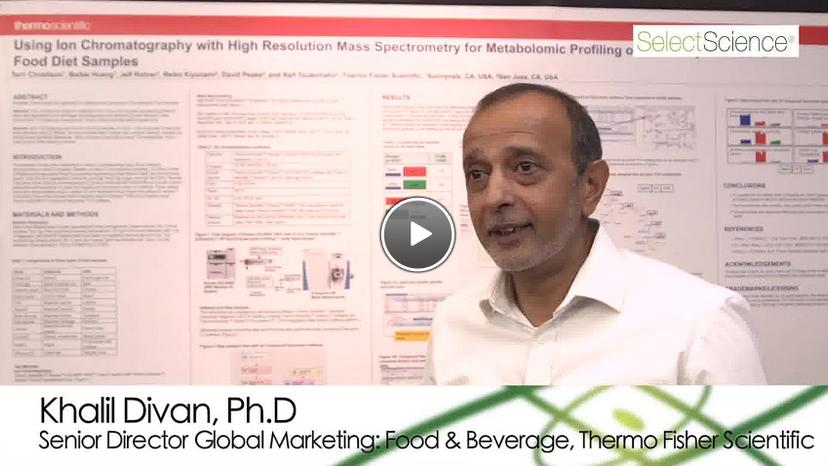Analyzing Small Polar Metabolites to Better Understand the Metabolomic Disturbances Related to Disease, Lifestyle and Diet
From a poster presentation at AOAC, find out how ion chromatography with tandem mass spectrometry can be used for metabolomic profiling of food diet samples
29 Dec 2016


The AOAC 2016 Annual Meeting and Exposition, this year held in Dallas, Texas, aims to educate and facilitate the collaboration of scientists from around the world, through scientific sessions, roundtables, workshops, and poster presentations to meet a variety of analytical needs.
SelectScience® spoke to Khalil Divan, Ph.D, Senior Director Global Marketing: Food & Beverage, Thermo Fisher Scientific, to hear how his colleagues are investigating polar metabolites in a variety of foods. To carry out this type of investigation, Dr Divan believes that IC-MS, specifically anion exchange chromatography, coupled with high resolution accurate mass spectrometry, is the most effective technology for sensitive and selective analysis of polar metabolites.
The influence of factors such as diet, lifestyle and disease can be studied by analyzing the metabolites present in various foods, as they provide information on the biochemical and physical state of an organism. Dr Divan explained that, as part of an experiment conducted by Terri Christison in Sunnyvale, California, three types of food samples were investigated, representing three different diets: low animal protein, high fish & vegetables, and high beef, sugar & fat.
Separation was performed using the Thermo Scientific™ Dionex ICS-5000+ Reagent-Free HPIC System followed by detection with the Thermo Scientific™ Q Exactive™ HF Hybrid Quadrupole-Orbitrap™ Mass Spectrometer, Dr Divan explained, which he believes is “the best technology for separating ionic compounds and identifying them”. Following detection, the small polar molecules were identified using the Thermo Scientific™ Compound Discoverer™ Software, he added.
This method was selected due to proven success of IC-MS for the purpose of polar compound analysis. The diet groups targeted were selected to provide an accurate representation of three distinctly different diet types, enabling them to better understand how each diet is likely to relate to metabolomic disturbances.
To conclude, Dr Divan commented that “high resolution accurate mass is the ultimate technique for looking at these ionic compounds”. The results of the experiment confirmed that IC coupled with HRAM provided a superior method to other LC methods to resolve small polar metabolites, and demonstrated that the food groups had significant differences that could impact metabolomic cycles and health.
